Quicklime: features and scope
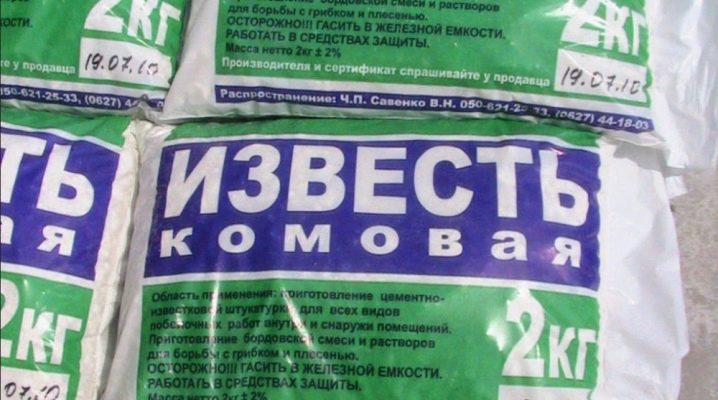
Lime is a versatile substance that, due to its extensive and varied properties, can be used in almost any field of activity. It comes in various types, depending on the selection criteria, and is divided into several varieties. The options for preparing solutions with its content do not differ much from each other and do not cause difficulties, therefore, this raw material can be used independently without the involvement of specialists.
Peculiarities
Quicklime is a calcium oxide obtained by calcining calcium carbonate and has a finely porous structure. Sometimes quicklime is called a boiled lime.
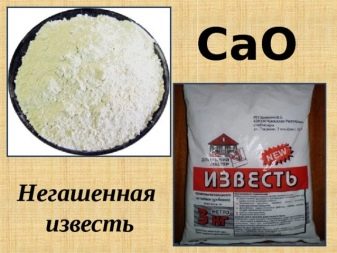
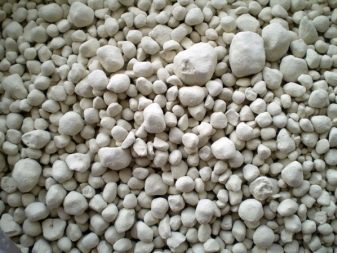
Advantages over slaked lime
It has many advantages over the slaked variety:
- high strength;
- absorbs less moisture;
- work with this material can be carried out in winter;
- no waste;
- a very broad scope of application.
Quicklime is dangerous to human health, so it is advisable to work in an open space.using protective equipment.
A good advantage of quicklime is its low cost in comparison with other mixtures. Lime material is resistant to temperature extremes, it does not crack, and has antimicrobial properties.

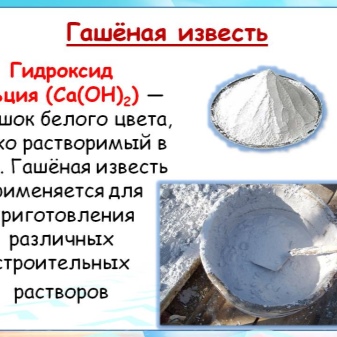
Specifications
Lime is a substance that is often found in nature (mainly in rocks), and the product is manufactured in full compliance with established standards, because mixtures on such a basis must perform protective functions at a high level.
The finished lime should consist only of carbonate rocks (limestone) with a small amount of clay. Various additives and impurities are allowed in the composition of the material based on GOSTs, depending on the field of application.
Limestone is very similar in appearance to chalk or coke, but they have different properties and are not interchangeable. To distinguish limestone from chalk, you can drip water on them. Chalk will not give any reaction, but limestone will begin to foam and generate heat. If you use chalk to whitewash the walls, it will leave marks on clothing and surfaces in contact with the wall. Lime does not leave any traces, so it is most often used to whitewash walls.
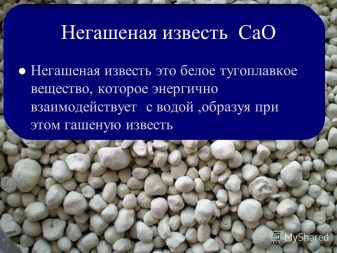
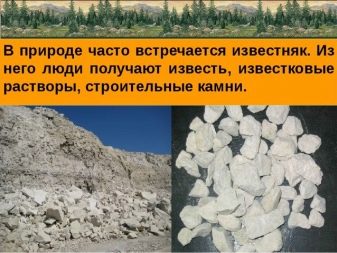
Quicklime is divided into three grades (1, 2 and 3), and slaked lime is subdivided into 1st and 2nd grade. The exception is powdered quicklime, it is divided into two grades and has additives. The rest of the types are made without impurities.
By external physical indicators, for example, by color, you can determine the grade of the material. After thermal treatment of limestone, quicklime is obtained, and if it has a white color, this means that the material does not contain additives and belongs to a high grade. In other cases, the material has a grayish color, most often it is dolomite and hydraulic lime.
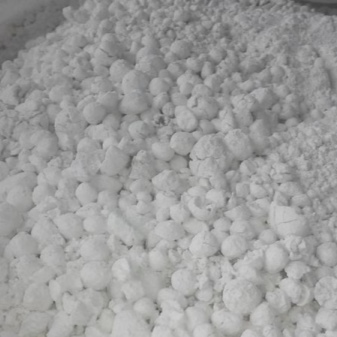
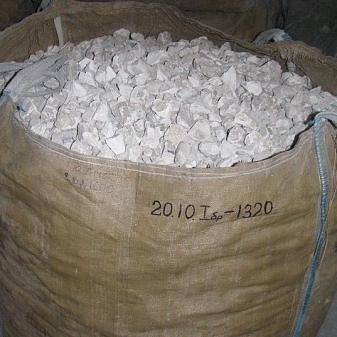
The manufacture of lime material consists of the extraction of the rocks themselves, their crushing to the required size and subsequent firing in special furnaces.Nowadays, shaft and rotary tube furnaces are most commonly used because they provide a uniform temperature effect on the material and a continuous firing process.
The strength of raw materials is influenced by the temperature during firing and the production process itself. There are three options for the strength of the finished product: hard-fired, medium-fired, and soft-fired lime.
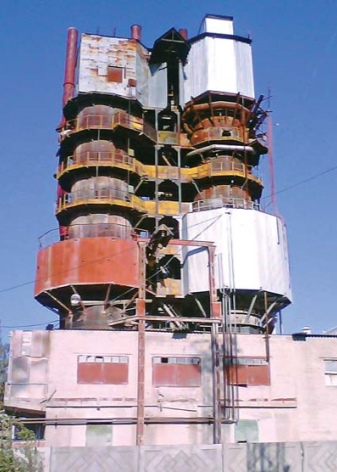
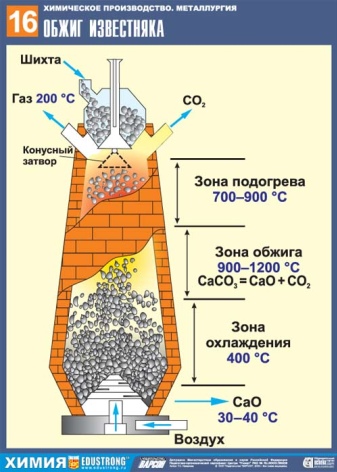
Softly calcined lime is very popular in construction, due to the following properties:
- the extinguishing process occurs quickly, within about 3 minutes;
- such material has a small size and low density.
Lime belongs to a low hazard class, but safety precautions must be observed during transportation and storage. Since quicklime reacts violently with water, you must make sure that moisture cannot get on the material.
The composition of lime most often includes various mineral additives that improve the properties of the material: granulated blast-furnace slags, quartz sands and other substances.


Views
There are two types of lime, which are distinguished by the amount of silicates and calcium aluminoferrites in them: air and hydraulic. They perform various functions, for example, air accelerates the process of concrete hardening, and hydraulic accelerates reactions in water.
It is important that all fragments of the substance are the same size. This moment indicates that the raw material was completely calcined in the furnace. If there are too large or too small pieces, then they may not completely undergo heat treatment, and this will reduce the quality of the finished material.

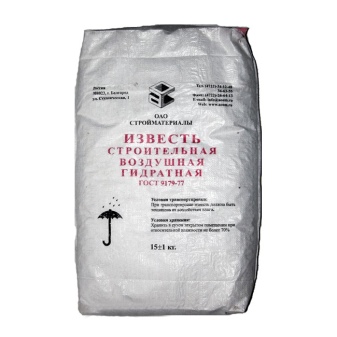
There are several types of material according to the type of processing:
- quicklime lump (boiling pot);
- quicklime ground (powdered);
- quenched hydrated - Ca (OH) 2;
- lime dough;
- lime milk.
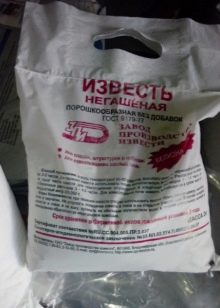
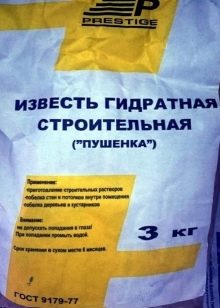
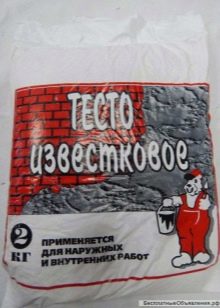
Lump lime
Lump lime is a mixture of lumps that differ in size. It is composed of calcium oxide and magnesium, as well as materials such as calcium carbonate, aluminates, silicates. Ferrites of magnesium or calcium can be added, which are formed during the roasting of raw materials.
Good strength of concrete is ensured due to the fact that lump lime requires very little water (due to fine grinding of the material) and practically does not generate waste.
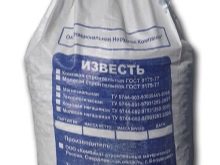
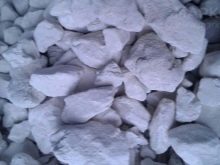
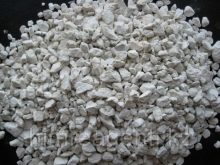
Ground lime
Ground lime has the same composition as lump, but the difference is that the lumps of raw materials are ground much harder and more thoroughly.
The main advantages of ground lime:
- strength;
- water resistance;
- fast hardening.
To increase or decrease the rate of hardening, calcium chloride or sulfuric acid is often used (gypsum material is also suitable).
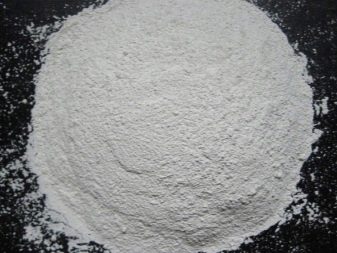
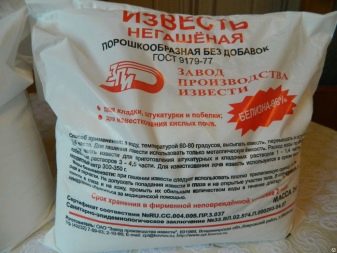
Hydrated lime
Hydrated lime (also called fluff) is a slaked type of material with a highly dispersive composition. Quenching takes place by adding water to the raw lime. To prepare such a solution, 70 to 100% water is added to the powder.
In order for the lime to go through the slaking process completely, it must be placed in a special pit for 2-3 weeks. So it will gain optimal strength and ductility. The shortest maturity period is 36 hours. In order to prevent the raw material from burning out, it is advisable to add water gradually until the moment when steam ceases to be emitted.
Lime dough is formed when enough water is added to form a plastic material. You can also find a solution such as milk of lime (mainly used to whitewash tree trunks). Milk of lime is made by adding excess water to the dough of lime.
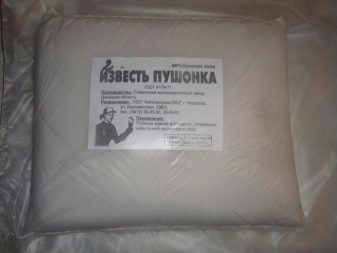

Types of formulations
Depending on the scope of application, the following types of compositions are distinguished:
- Construction lime - it is added for the preparation of concrete and cement mixtures in order to increase the strength of the composition;
- Hydraulic - also used for the production of concrete, but of low grades. Ideal for structures that are located in areas with high humidity;
- Komovaya - mainly used to prepare a solution for whitewashing;
- Sadovaya - it is used in agriculture as soil fertilizer, treatment of plants from insect pests, protection against rotting and improvement of growth, it is highly undesirable to use it simultaneously with other types of additives and fertilizers;
- Natrovaya - used in the chemical industry and in medicine;
- Chlorine - used as a disinfectant and for water purification.
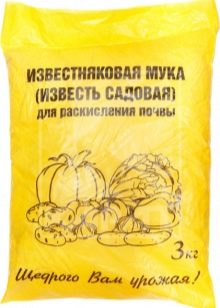
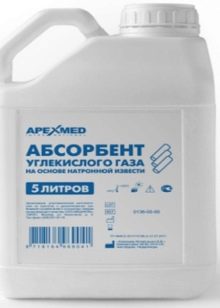

Classification of lime by slaking time
- fast-extinguishing (up to 8 minutes);
- medium damping (up to 25 minutes);
- slow-extinguishing (from 25 minutes).
Types of air lime
Depending on the percentage of magnesium oxide in the composition, the following types of air lime are distinguished:
- calcium;
- magnesian;
- dolomite.
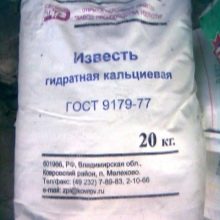
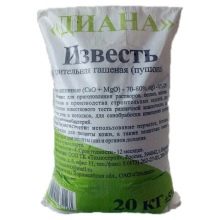
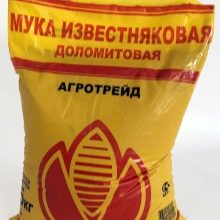
Scope of application
Lime is used in many areas.
- In agriculture, lime is used to combat pests, lower the acidity of the soil, prevent the appearance of fungi, additional feeding of animals, improve the cultivation of the land, and replenish the supply of calcium and phosphorus. It is best to handle heavy soil with quicklime. Lime is widely used as a material for whitewashing trees and treating plants.
- Construction. It is used to accelerate the hardening of cement and impart plasticity to the composition, participates in the production of thermal insulation materials and dry building mixtures, serves as a link in building structures.
- Ferrous metallurgy - enriches ferrous and polymetallic ores.
- Chemical industry - used in paint and varnish, perfumery and pharmaceutical industries. It is used as a reagent and as a neutralizer of acid sludge.
- Pulp and paper industry.
- Textile industry.
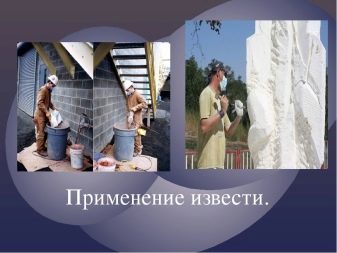
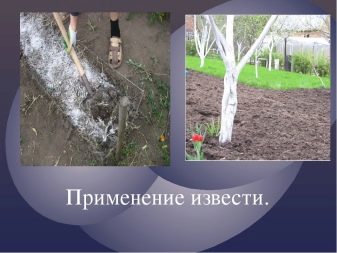
The chlorine variety of lime is used for disinfection and washing of public places., since it has disinfecting properties. Quicklime is even used in the food industry for mixing substances, and milk of lime is used to make sugar. Soda lime is used in medicine (artificial ventilation of the lungs or for anesthesia) and for respiratory systems (scuba gear, respirators and other devices).
Coating wooden surfaces with lime mortar protects them from rotting processes and fires.
How to use?
When preparing lime mortar, it is important to ensure the safe interaction of raw materials with water for humans. It is advisable to carry out work in a well-ventilated area, and preferably in an open space. Since the substances used are chemistry, it is necessary to adhere to safety rules when working with such materials.
Powder can be used both dry and liquid. To prepare a liquid solution, the powder is poured into a container and filled with water. The solution must be mixed and diluted to the required consistency.
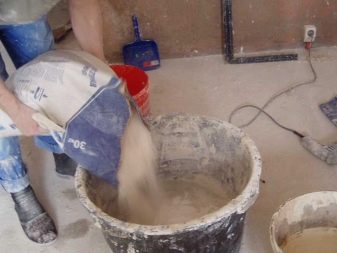

To whitewash trees, the raw material is diluted with water and applied to the tree trunk using a wide brush. But due to the liquid consistency of the solution, you will have to process the barrel several times. In order to shorten the work time, you can add clay, milk, PVA glue to the solution. These ingredients will make the mixture thick and viscous, and it will lay evenly on the surface. Before processing the tree, you need to remove all the dead layers of bark, while not damaging the trunk.
To protect plants from fungus, you can use soda ash instead of lime, because soda dissolves faster and completely in water.
Do not treat the soil with too much lime, as it will become alkaline, which will also not contribute to good growth and development of plants.You cannot use manure and lime at the same time, because such a combination will prevent the formation of useful substances.
Before using bleach, it is necessary to check the reaction of the surface. To do this, you can treat a small area, and if it remains intact after about 10 minutes, then you can use bleach on the entire surface. First, water is added to the raw material in a small amount and stirred until sour cream, and then more water is gradually added, also stirring, until a liquid solution is formed. Dry bleach is used only on damp surfaces.
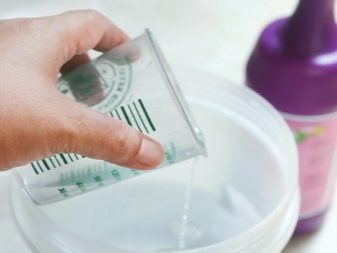
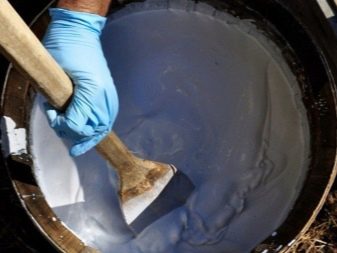
In construction, it is recommended to use quicklime ground lime for the manufacture of plasters, cinder concrete, and coloring elements. In other cases, slaked lime is used, which, due to its moisture resistance, prevents the formation of mold.
The fluff has a wide range of applications: from household needs to construction. To prepare fluff, it is necessary to pour raw materials into a metal container without rust (or into a plastic one) and gradually add water, stirring the solution. Once the mixture is ready, you need to leave it to infuse for several hours or days. The longer it will stand, the higher its quality and strength indicator will be.
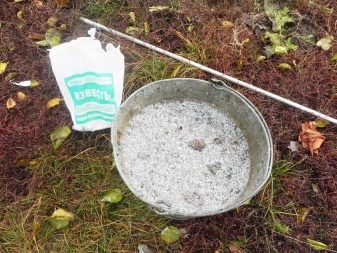
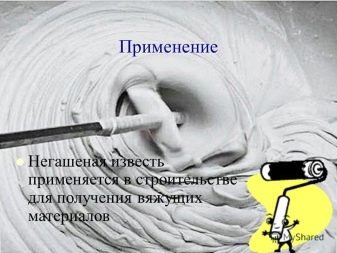
Advice
- If you need to store the ready-made mortar for a long time, you can periodically add water to it. Initially, water is added until the material no longer absorbs it. This rule does not apply to the preparation of milk of lime.
- The optimum depth for digging lime into the soil is 20 cm, but if the fertilizer dose is small, then the depth should be less. From above, lime is covered with a layer of sand. For storage in winter, it is recommended to pour another layer of soil 70 cm high on top of the sand layer.
- Before applying to any surfaces (wood, concrete, cement, metal), it is necessary to completely remove dirt, grease, defects, and rust from them.
- It may happen that lime gets to an unnecessary area and should be washed off. To do this, first of all, it is necessary to abundantly moisten this area, wait for the lime to dissolve well, and then remove the material with a hard metal sponge. Repeat these steps if necessary. There are ready-made solutions on the market for such needs, for example, Guard Industrie or "Space". You can also use homemade hydrochloric acid solutions.
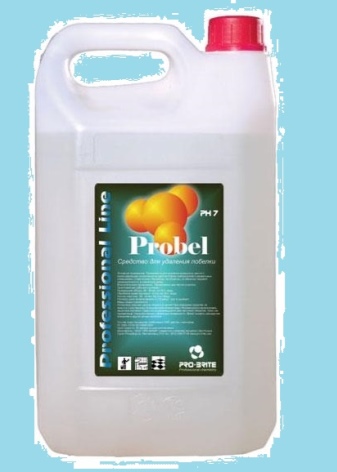
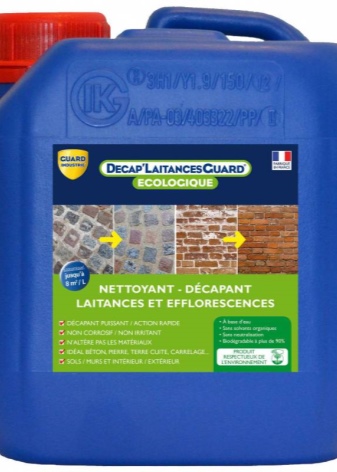
- It is not recommended to carry out a primer before whitewashing, as lime will not fix on such a base. It is also advisable to whitewash with brushes, and not with a spray gun. The brush will better distribute the lime mortar and the finish will be better.
- The longer the aging period of the finished mixture, the better it will perform its functions.
- For the preparation of mortars, it is best to add sand as well.
- This material is not suitable for making fireplace or stove cement, as carbon dioxide is released when heated.
- To obtain insulation, you can add sawdust and gypsum to the fluff. In other cases, the lime mortar should not contain sawdust, lumps and other inclusions in order to evenly and completely cover the surface.
- Bleach must be stored in a dark room, because part of the active chlorine is lost under the influence of sunlight.
For information on how to determine the quality of lime, see the next video.













The comment was sent successfully.